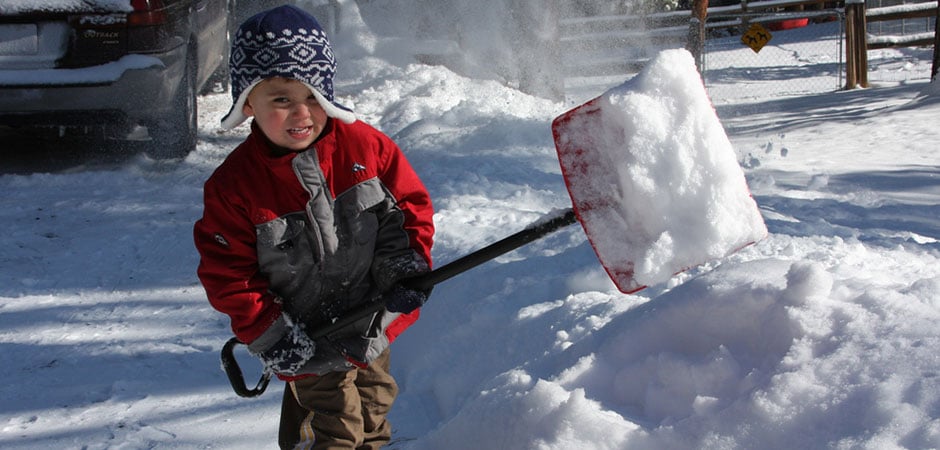Safety Tips to Remember When Shoveling Snow
January 21, 2015 / GVC Mortgage, Inc. / The Yard, The Homefront, Press Room
Safety Tips to Remember When Shoveling Snow

When you’re ready to go outside and start shoveling the snow piled high on your driveway, you’ll want to remember a few of these safety tips for you and your kids.
Wear proper clothing
Wear lightweight, layered, and water-repellent clothing. In addition to keeping your core insulated, you’ll want to wear a hat, gloves, and warm socks to keep your extremities warm.
Stretch first
Before you start shoveling snow it’s important to stretch out. Stretching decreases your risk of pulling or straining a muscle, especially in your back and shoulders, which are high risk areas for this type of activity.
Pace yourself
Jumping right in and going non-stop can severely raise your heart rate. One study found that after only 2 minutes of shoveling snow, the heart rates of sedentary men rose to levels higher than those normally recommended during aerobic exercise.
To keep your heart from overexerting itself be sure to take breaks. If you start to get out of breath, stop and re-coop before you start back up again.
Lift with your legs
Make sure you bend at the knees and lift with your legs rather than trying to stand up and use your back. Although you should lift only as much as you have strength for, if you end up picking up more than you can handle, using your legs will help offset the stress that will be placed on your muscles.
Snow can weigh quite a bit depending on the type and how much has accumulated in your driveway. Consider this, if you were to clear a 16-foot by 30-foot driveway covered in a foot of wet snow, you would be moving approximately 4 tons of snow. Moving this much material only a few months out of the year causes a lot of stress on muscles which aren’t used in the same way during the remainder of the year. So make sure you use your legs more than your back or shoulders.
Work up your strength
When you shovel for the first time during the season you want to make sure you only push and lift as much as your body will allow at the time. If the snow is extremely wet, try skimming off the top 6 inches to start and then work your way down to the pavement. The more you shovel the more your muscles will get used to the activity, but for now, work up to that point.
Stay hydrated
Dehydration is a big concern when you’re shoveling during the cooler winter months. Take breaks and drink water to stay hydrated. Stay away from caffeine and nicotine since these substances act as stimulants and will constrict your blood vessels.
Purchase the right equipment
For snow shoveling you’ll want to pick the best shovel for your needs, one that is the right size for you and not too heavy. As for which material works best for the actual shovel portion, you’ll have to choose between plastic, steel, and aluminum.
Plastic shovels tend to be lightweight and release snow easily. However, constant use can wear out the edge of the blade quickly. Steel shovels are extremely durable, but they are quite heavy and expensive. Your last option, aluminum, is in-between the plastic and steel models. Aluminum shovels are more durable than plastic and lighter than steel. The downside of this type of shovel is it can be bent easily.
Give yourself a pat on the back
When you complete clearing off the snow from your driveway, or sidewalk, you deserve a congratulations. If you have time, grab a cup of hot chocolate and pat yourself on the back for a job well done – as you’ll more than likely be shoveling again after the next snowfall.
What safety measures do you take when shoveling your driveway?
.png?width=505&height=89&name=GVC%20Mortgage%20(4).png)


.png)
